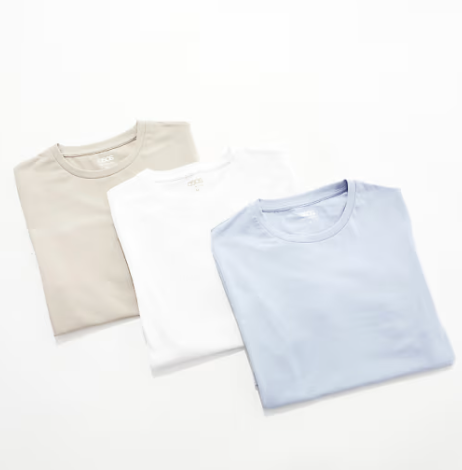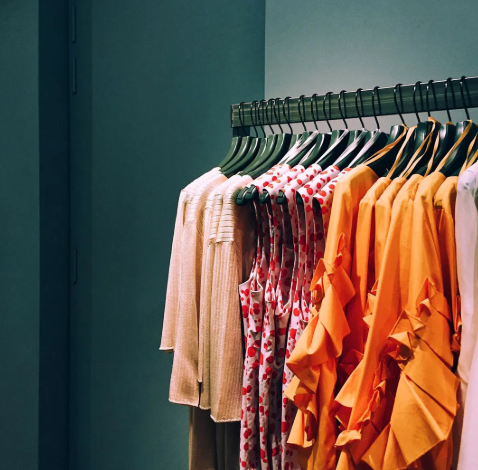Lightweight vs. Heavyweight Fabric: How to Choose the Right Fit for Style and Comfort

When it comes to selecting clothing that suits your lifestyle, the weight of the fabric plays a significant role. Whether you’re getting dressed for a summer outing or layering up for a winter stroll, understanding the difference between lightweight and heavyweight materials helps you make more informed choices—and ultimately stay comfortable and stylish in any setting.
Why Fabric Weight Matters
The weight of a fabric affects everything from how it feels on your skin to how it performs in various conditions. Lighter fabrics are breathable and easy to wear during warm weather or for high-movement activities. Heavier fabrics, on the other hand, offer more structure, insulation, and durability—making them ideal for cooler climates or layered outfits.
Choosing Based on Function
Fabric weight isn’t just a fashion detail; it can influence the way your clothes hang, how much they insulate, and how well they move with you. Lighter materials work well for flowing silhouettes or casual wear, while heavier fabrics are often used for items designed to last through multiple seasons or provide extra warmth.
Benefits of Lightweight Fabrics
- Comfort: Soft and airy, lightweight fabrics keep you cool and relaxed. Perfect for long days in the sun or outdoor activities, they allow airflow and prevent overheating.
- Adaptability: From beach vacations to casual summer parties, lightweight materials transition easily between settings and styles.
- Pack-Friendly: If you travel often, lightweight pieces are a dream. They fold neatly, weigh little, and spring back into shape quickly.
- Seasonal Layering: These fabrics pair well with sweaters and jackets, giving you year-round styling flexibility.
- Style Range: With countless color and print options, lightweight fabrics offer endless room for self-expression.
Popular Lightweight Fabric Types
- Cotton: A breathable staple, cotton is ideal for warm weather and comes in various textures for shirts, dresses, and casual wear.
- Polyester: Lightweight, durable, and moisture-wicking, polyester works great for activewear or outerwear that’s easy to care for.
- Silk: Smooth and luxurious, silk adds elegance to lightweight scarves, wraps, and upscale tops.
- Linen: Known for its crisp texture and cool feel, linen is perfect for hot climates and laid-back looks.
- Rayon: A soft, breathable fabric with a nice drape, rayon blends comfort with a polished appearance.
Clothing Examples Made with Lightweight Materials
- Sweatshirts: Lightweight crewnecks and hoodies offer warmth without bulk. Ideal for layering during mild weather or for lounging indoors.
- Jackets: Windbreakers and lightweight denim jackets provide coverage without feeling heavy. Great for transitional seasons or cool evenings.
- Tanks and Tees: Cotton tanks and rayon-blend tops offer breathable comfort with a relaxed, everyday vibe.
- Pants and Trousers: Linen trousers, cotton joggers, and quick-dry athletic pants give you flexibility and ease of movement, especially in warmer conditions.
- Track Pants: From running errands to actual runs, lightweight track pants made from moisture-wicking fabrics keep you cool while maintaining comfort and mobility.
The Case for Heavyweight Fabrics
Though lightweight materials offer versatility, heavyweight fabrics hold their own in different ways. Denser materials like wool, denim, and corduroy provide structure and warmth. They’re well-suited for layering during cold months or for adding a more defined shape to an outfit. Some heavyweight fabrics also regulate temperature, keeping you comfortable in fluctuating conditions.
How to Decide Which to Wear
Your environment, activity level, and style goals all play a role in choosing the right fabric weight. If you’re active or dealing with heat, lightweight is the way to go. If you’re facing cold winds or want a piece with longevity and structure, a heavier option will serve you better.
At the end of the day, both fabric weights have their place in a well-rounded wardrobe. Mixing and matching them allows you to dress functionally and fashionably year-round.





